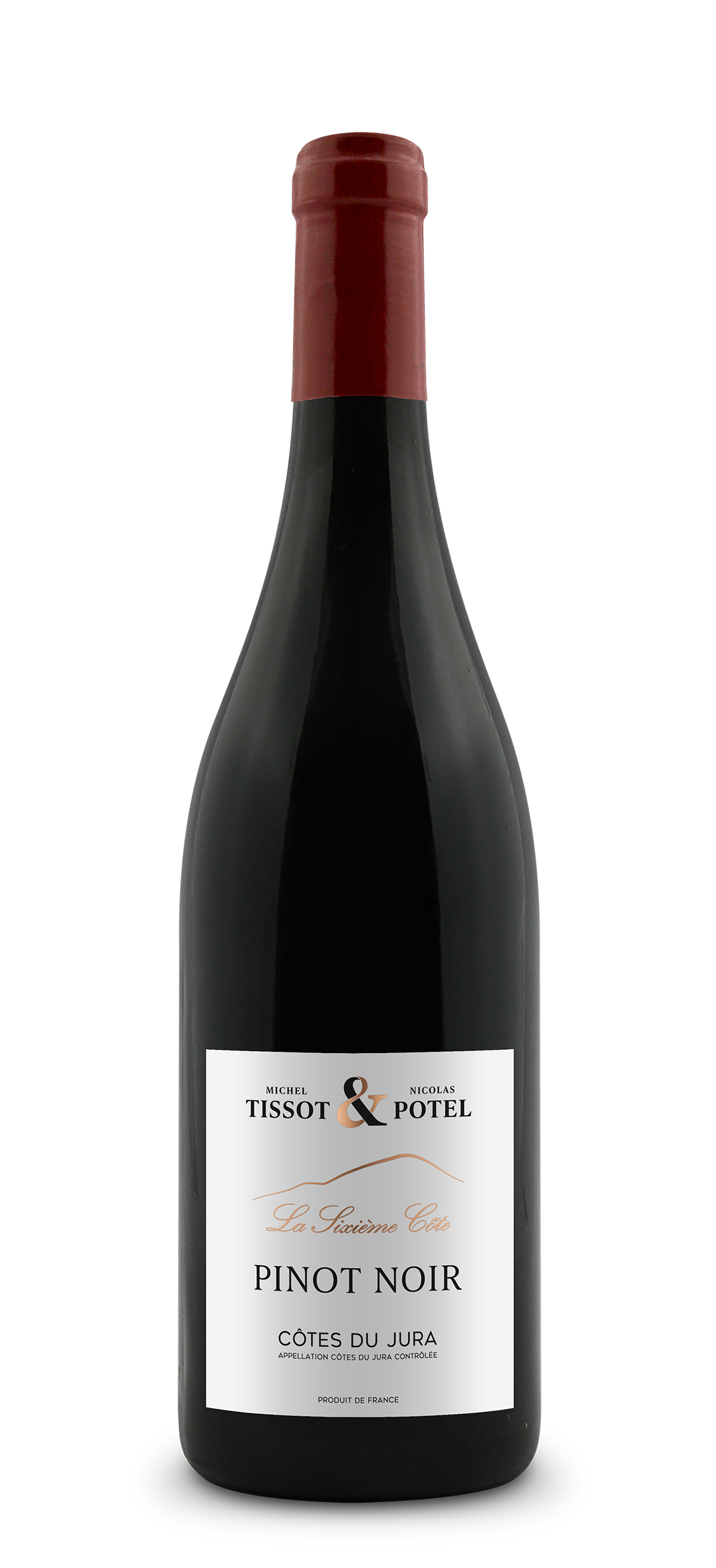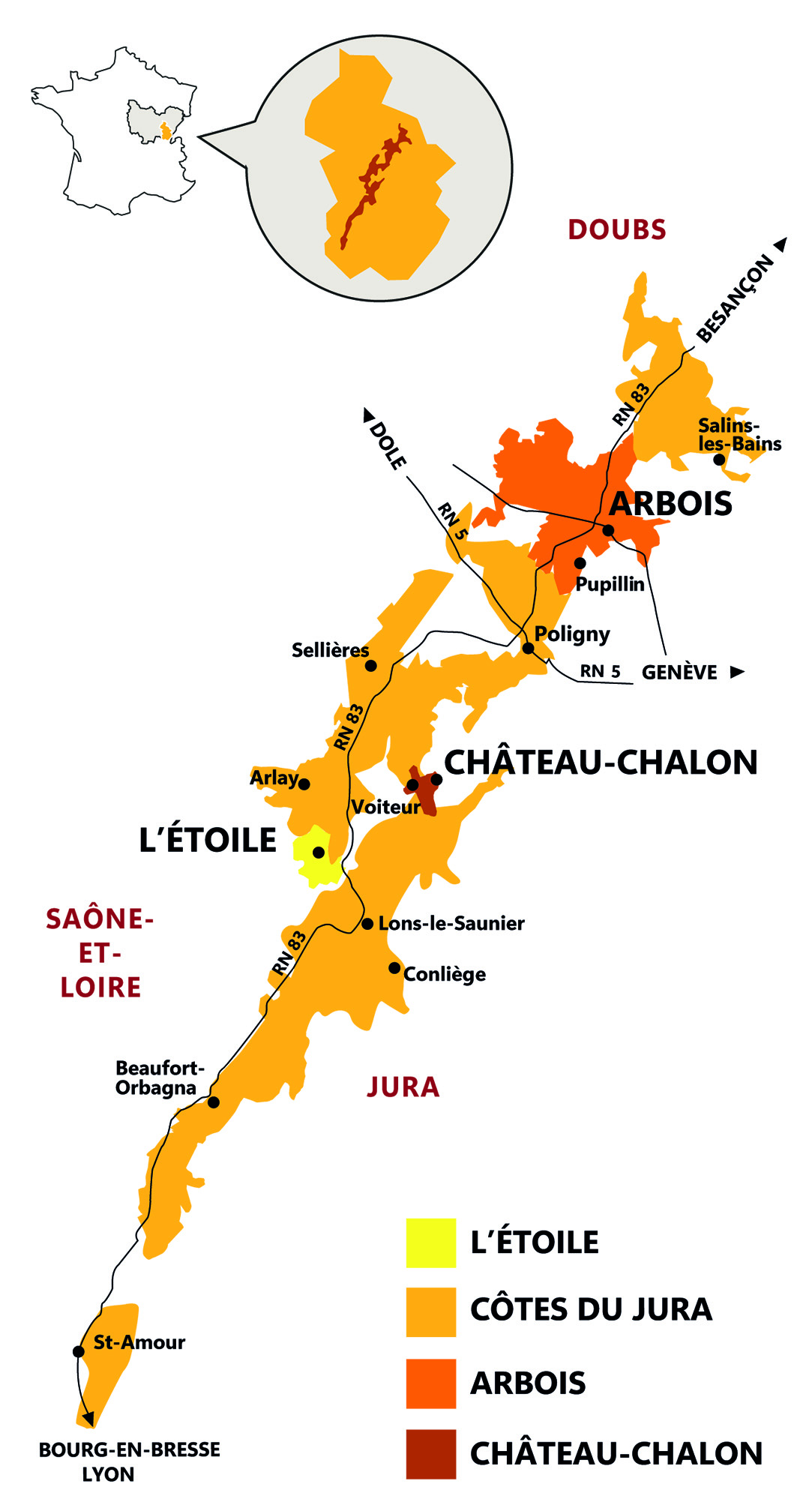
PINOT NOIR
Côtes du Jura


Grape variety
100% Pinot Noir: planted since the 15th century in the Jura, on gravelly soils, Pinot Noir is often blended with other varieties, for its flavour and cellaring potential. It covers nowadays around 15% of the Jura vineyards and gives red wines with a strong colour and hints of wild mushrooms, cherries and wild berries.
Used here as a single variety, it is perfectly illustrating the Jura vineyards interpretation as the sitxh Burgundy "Côte"!
Tasting notes
The wine shows a limpid dress. The nose is pleasant, straight and fine, revealing red fruits flavours. In the mouth, it is an elegant and rich wine with black fruits aromas and delicate spices notes. The well-marked yet velvety tannins bring structure and body.
Food and wine pairing
Serve with beef, dishes cooked and marinated such as “coq au vin” or in accompaniment of a great plate of famous local Jura cheeses!
Serving suggestions
Serve ideally at a temperature of 14-16°C (57-61°F).
Ageing potential
5 to 6 years.
Appellation
The Jura wine region is small in size but large in its remarkable diversity. It covers 80 kilometers between Burgundy and Switzerland, in the eastern France.
Created in 1937, the AOC (designation of origin) of Cotes du Jura is omnipresent in the north and south of the vineyard, on varied and contrasting terroirs. It is the second leading AOC in Jura in terms of production, and it engages all five of the Jura's grape varieties. The whole range of wines of the Jura is represented, although the whites dominate - still or sparkling - with wines that are round, fruity, and generous.
Terroir and cultural mode
This cuvée is made from grapes hand-picked from 3 parcels selected from among the finest terroirs in the Jura, in the village of Arbois, which are particularly well-suited to the Pinot Noir grape variety: ‘Grande Côte de Grillard’, ‘Casse-Cailloux’ and ‘Combe Leubet’.
The vines are grown at altitudes of between 280 and 350 metres above sea level on soils that alternate between marl and limestone residues. They were planted in 1999, 2001 and 2004 depending on the depending on the plot.
The work in the vines, is based on the respect of the nature and the soil. The Guyot double pruning is necessary for the Pinot Noir to better control its performance.
For young vines, located on steep slopes, to avoid erosion, we cultivate a row out of two, practice soil reassembly to aerate the lands subjected to settlement due to moisture, and grass with plants such as clover, which, by competing on the vine, can modulate its mineral and water supply and control its vigour and yield.
